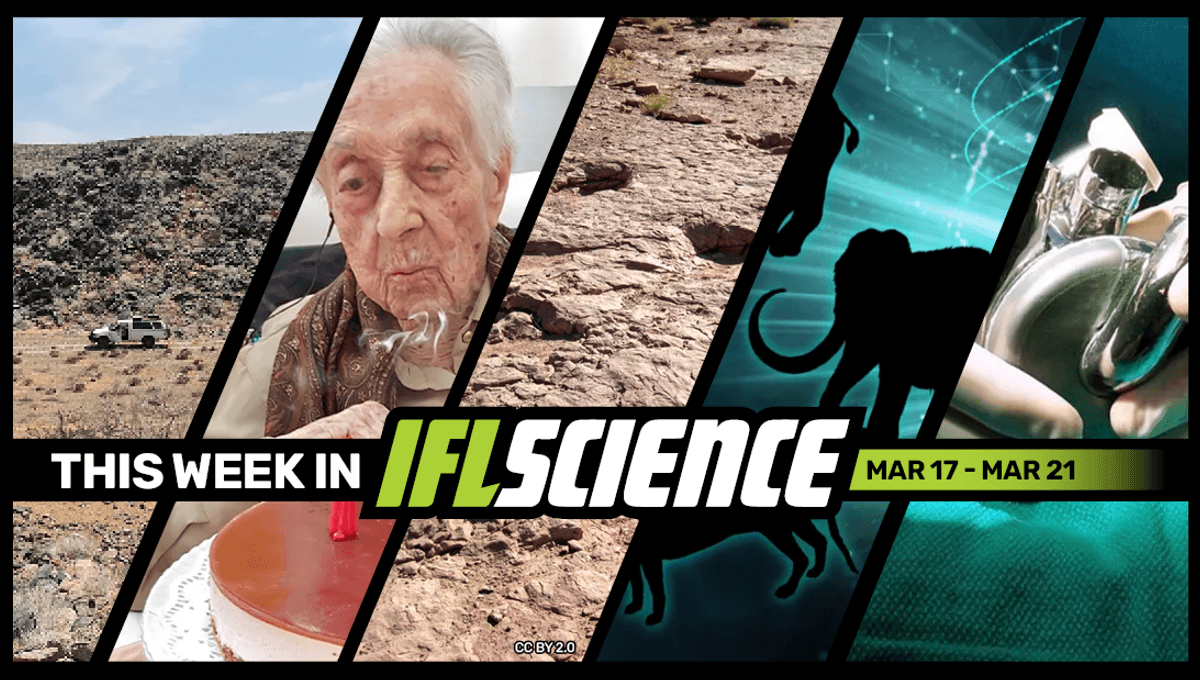
This week, scientists now know how Maria Branyas Morera lived to be 117 years old, further observations have found that a set of famous dinosaur tracks were not made by sauropods walking on their hands, and, in a world first, an Australian man leaves hospital with a titanium heart. Finally, we exclusively speak to astronaut Dr Kathy Sullivan – the only person to have both spacewalked and visited the deepest point in the ocean.
Create an IFLScience account to get all the biggest science news delivered straight to your inbox every Wednesday and Saturday.
An Unknown Lifeform Made Structures In Namibian Desert Rock Over A Million Years Ago
ADVERTISEMENT
Strange, tiny structures have been found in the rocks around the deserts of southern Africa and the Arabian Peninsula. The structures are known as micro-burrows, unusual tube-like tunnels – about half a millimeter wide and up to 3 centimeters long – found in the marbles and limestones of certain deserted regions. Scientists are now confident that these unusual formations were not made by a geological process, but by a mysterious lifeform that remains unknown. Read the full story here
Maria Branyas Morera Lived To Be 117 Years Old. Scientists Now Know How She Did It
Humans are living longer than ever – but even today, few of us will make it past 100. Even fewer will reach 110, or 115. In fact, in the entire world, there are less than 250 of these “supercentenarians” – aka people older than 110 – and only three of those are 115-plus. They’re a rare breed, is the point. But why? What sets these super-agers apart from the rest of us? Is it nature, or nurture? A new analysis, not yet peer-reviewed, might turn up some clues – and it’s all thanks to one remarkable woman. Read the full story here
Sadly, Famous Dinosaur Tracks Were Not Made By Sauropods Walking On Their Hands
A series of footprints once attributed to a “swimming brontosaur” has a far more likely explanation, new research has found. Although the work focuses on a single famous case, it has implications worldwide for tracks that bafflingly only show front, or rear, prints from large four-legged sauropods. Despite this, the lead author of the research thinks these mighty beasts probably could swim, but didn’t leave us handy signs. Read the full story here
De-Extinction: Should We Bring Extinct Species Back From The Dead?
The world currently stands on the precipice of a sixth mass extinction, and this time, it’s humanity’s fault. That means it’s on us to try and fix things, and work is already well underway to resurrect certain long-lost species as part of an ambitious plan to reverse the situation. De-extinction, they call it. Yet as Dr Ian Malcolm wisely observes in Jurassic Park, “Scientists were so preoccupied with whether or not they could, they didn’t stop to think if they should.” So, should we? Read the full story here
Australian Man Becomes World’s First To Leave Hospital With Titanium Heart
A man in Australia who received a titanium heart has achieved a double world-first, after becoming the only person to survive with the artificial heart for more than 100 days, and to be discharged from hospital with the implant still in place. The Australian patient received a BiVACOR titanium heart during a procedure carried out at St Vincent’s Hospital in Sydney last November, the first one conducted in the country. Read the full story here
TWIS is published weekly on our Linkedin page, join us there for even more content.
Feature of the week:
From Spacewalks To The Deepest Abyss: We Chat To Astronaut Kathy Sullivan, The Only Person To Do Both
There are only a handful of people who have experienced seeing Earth from space and what lies at the bottom of the ocean, but even among those select few, Dr Kathy Sullivan has a record that is unique. She’s the only person ever to have spacewalked and visited the Challenger Deep, the deepest point in the ocean – the first American woman to do the former and the first-ever woman to do the latter. Read the full story here
More content:
Have you seen our e-magazine, CURIOUS? Issue 32 March 2025 is available now. This month we asked, “Can We Really Trust Our Memories?” – check it out for exclusive interviews, book excerpts, long reads, and more.
PLUS, the We Have Questions podcast – an audio version of our coveted CURIOUS e-magazine column – continues. In episode 6, we ask “Why Do Humans Play Games?”
Season 4 of IFLScience’s The Big Questions podcast has concluded. To revisit all of season four’s episodes, click here.
Source Link: Unknown Lifeform Made Desert Structures Over A Million Years Ago, Should We Bring Extinct Species Back From The Dead? And Much More This Week